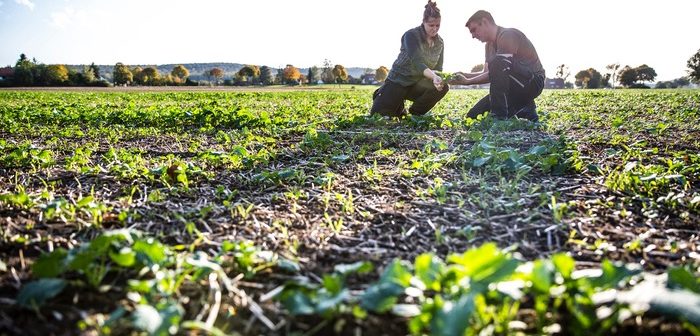With rapeseed prices remaining high, those growers who are intending to drill a crop (if and when rainfall allows) should use a pre-emergence herbicide to guard against weed competition during the crop’s establishment phase. That’s the advice from Dr Bill Lankford, herbicide technical specialist at ADAMA, who cautions against the temptation to withhold herbicide applications until post-emergence as this can give weeds a head-start and leave crops playing catch-up.
“With several grasses and broad-leaved weeds already displaying resilience to a selection of key herbicides, it pays to use a range of active ingredients throughout the season, including at the pre-emergence timing,” Dr Lankford explains.
“This not only spreads the risk of resistance by reducing the over-exposure of any single active, but also ensures crops are able to out-compete weeds during the critical establishment phase.”
HGCA research (Project Report No. 530) indicates that OSR yield losses from poor broad-leaved weed control can range from 3% to 73%, with the mean yield response to a pre-emergence application of metazachlor followed by a post-emergence graminicide and propyzamide treatment equating to 0.94t/ha or 41%.
Rate and timing essential
“While the efficacy of post-emergence applications can be excellent when weeds are small, rate and timing restrictions for some actives can result in long delays between the emergence of early drilled crops and the first opportunity to apply a post-emergence treatment,” Dr Lankford continues.

Dr Bill Lankford
“For example, halauxifen can’t be applied until 1st September or when two true leaves have emerged at BBCH12 which gives broad leaved weeds plenty of opportunity to grow away, out-compete the crop, and become harder to control.
“A pre-emergence herbicide should therefore be applied, especially where good crop establishment is expected – for example where Cabbage Stem Flea Beetle populations aren’t expected to pose a significant threat to OSR survival.”
In terms of actives to use at the pre-emergence timing, Dr Lankford recommends a combination of mutually beneficial chemistries to spread the risk of herbicide resistance and to ‘power up’ the overall efficacy of the combined pre- and post-emergence weed control programme.
“Metazachlor is the ideal building block for early weed control in oilseed rape as it provides cost-effective activity against a range of grassweeds including annual meadow grass and black-grass and versus other problem weeds including common chickweed, bur chervil and mayweed species.”
The addition of clomazone into the pre-emergence programme will further enhance chickweed control as well as adding useful control of a range of broad-leaved weeds, cleavers and hedge mustard.
“With rapeseed prices still historically high, it’ll pay to apply a pre-emergence herbicide this autumn so that young crops can steal a march against any early season weed competition,” Dr Lankford concludes.




